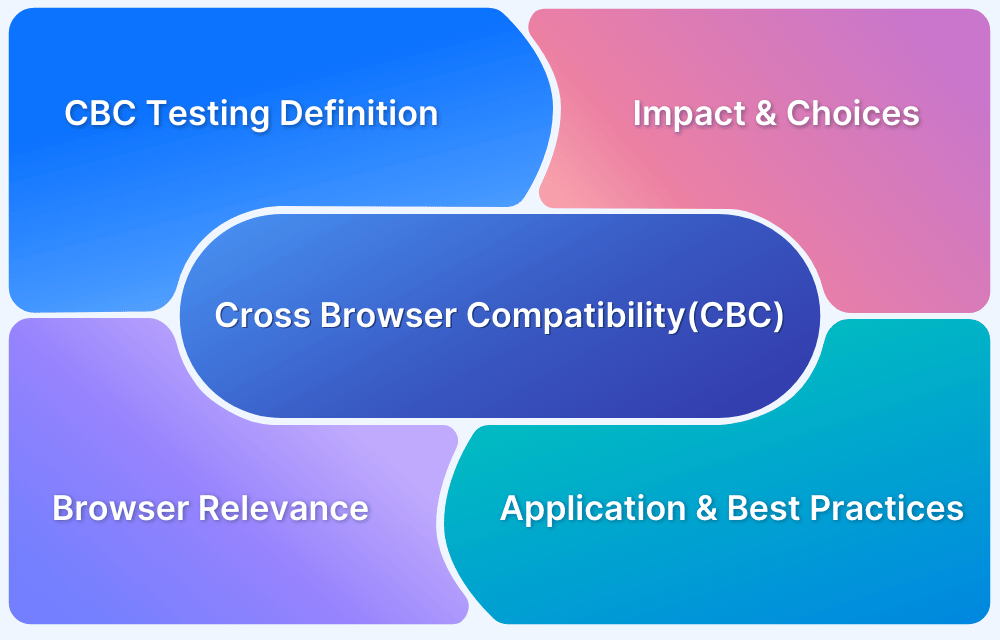Index Surge: Amplifying Your Insights
Stay updated with the latest trends and news across various industries.
When Browsers Battle: Keeping Your Website in the Ring
Discover how to ensure your website stays competitive as browsers clash! Tips and tricks to keep your site in top form await.
Top 5 Browser Compatibility Issues and How to Fix Them
Browser compatibility issues can significantly impact the user experience on your website. These issues arise when a web page does not display or function correctly across different web browsers. Common problems include CSS layout discrepancies, JavaScript functionality failures, and HTML rendering variations. Addressing these issues is crucial because a significant portion of your audience may be using various browsers such as Chrome, Firefox, Safari, and Edge. In this article, we will explore the top 5 browser compatibility issues and provide practical solutions to ensure your site functions flawlessly across all platforms.
- CSS Layout Discrepancies: Different browsers may interpret CSS rules in varying ways. To combat this, use tools like CSS resets and frameworks such as Bootstrap to maintain consistency.
- JavaScript Functionality Failures: JavaScript may not work as intended in all browsers. Use feature detection libraries like Modernizr to ensure your scripts run smoothly.
- HTML Rendering Variations: Certain HTML tags can behave differently across browsers. Ensuring you use valid HTML5 can help minimize these issues.
- Font Rendering Issues: Fonts may render differently depending on the browser. Utilizing web-safe fonts or Google Fonts can ensure better consistency.
- Media Compatibility: Video and audio formats may not be supported across all browsers. Implementing fallbacks or using formats like WebM and Ogg can enhance compatibility.

How to Optimize Your Website for Every Major Browser
Optimizing your website for every major browser is crucial for ensuring that all users have a seamless experience, regardless of their browser choice. Start by employing responsive web design techniques to ensure that your website adjusts gracefully across various screen sizes and resolutions. Utilize browser developer tools to simulate different browsers and devices, allowing you to identify and correct compatibility issues. Additionally, implement feature detection using libraries like Modernizr, which helps you determine whether a user's browser supports specific HTML, CSS, or JavaScript features, enabling graceful degradation or progressive enhancement based on their capabilities.
Testing your website across all major browsers such as Chrome, Firefox, Safari, and Edge is essential to capture any discrepancies in rendering. Consider using tools like BrowserStack or CrossBrowserTesting, which allow you to see how your site performs on multiple browsers and operating systems. Regularly update your code to comply with the latest web standards and specifications, which helps maintain compatibility. Finally, always prioritize load times and performance optimization as these factors largely affect user experience and SEO. By following these steps, you can significantly improve your site’s accessibility and usability for a diverse audience.
Are You Losing Users? The Importance of Cross-Browser Testing
In today's digital landscape, ensuring a seamless user experience across different browsers is crucial for retaining your audience. With a plethora of browsers available—each with its unique rendering engines—cross-browser testing has become an essential practice for web developers and marketers alike. If your website functions perfectly on one browser but fails on others, you risk alienating a significant portion of your users. In fact, studies show that nearly 80% of users abandon a site that doesn’t perform well on their preferred browser, leading to potential revenue loss and diminished brand reputation.
Moreover, cross-browser testing goes beyond mere aesthetics; it also addresses functionality and compatibility issues that may arise on different platforms. By implementing thorough testing strategies, such as using automated testing tools or manual testing protocols, you can identify and resolve issues related to layout, features, and interactive elements. Regular testing can not only enhance user satisfaction but also improve your site's SEO performance, ultimately boosting your visibility in search results. Don’t let your users slip away due to browser compatibility issues—invest in cross-browser testing as part of your web development strategy.